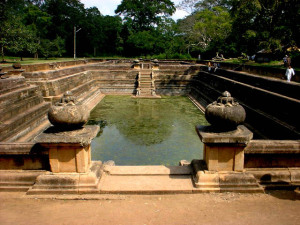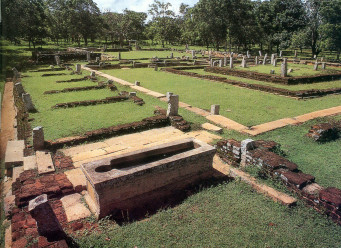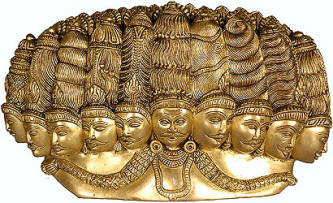By Deshabandu Palitha Ariyarathna
This island nation once called Ceylon. Srilanka- the name means splendid, brightly shining- is rich in religions celebration. each summer in the city of kandy. the temple of the tooth blazes with light for the festival honouring Buddha’s tooth. Elephants parade in jewels and satin. Dancer whirl through the night to ward of evil. Witch doctors try to cureills with drumming, chanting, and fire eating.
As the professor Keith Scott- Mumby discovered Srilanka was the origin of much thought and substance. Srilanka formerly known to the Arab as a serandib. the ancient Egyptian pharaohs, who were buried in the Valley of the Kings and the pyramids, had their nostrils, sinuses and body cavities stuffed with black peppers, to preserve them, The black pepper, even today, grows only in Sri Lanka.

Kuttam Pokuna (Twin Ponds/Pools).The said pair of pools were built by the Sinhalese in the ancient kingdom of Anuradhapura
Sri Lanka was a major player on the world stage. Sri Lanka had great kings, great art and monumental works of irrigation and building. This island was evidently on a par with ancient Greece, Ancient Rome and Egypt of the pharaohs. Long before the Romans (400 BC), Sri Lanka had hydro spas, swimming pools, public baths with working spray-jet showers, major irrigation reservoirs and hydro-engineering skills that worked accurately to a fall of one inch in one kilometre.
Homo sapiens sapientis, the wisest of the wise may having come out of Srilanka and not “out of Africa” at all! Known locally as the “Balangoda Man”,Balagodans ate a diet of plants, animals and seafood (oysters, molluscs and other gastropoda), typical of today’s fashionable “Detox” plans. Balangoda Man, over 30,000 years ago, began to fashion quartz, flint, bone, chert and other minerals into various functional shapes of great utility and technological sophistication.

Mihintale hospital
Professor Anton Jayasuriya describe first industrial revolution establish Balangoda Man. Over 30000 years ago. Their descendants are the Vaddas (aboriginal Sri Lankans), living in the jungles of Wanni. The Vaddas, along with Balangoda Man remains, have been extensively studied by Dr Diane Hawkey of the Arizona State University. Her analysis of dental morphology shows that Balangoda Man (Homo sapiens balangodensis) may well have marched forth and inherited the Earth.
The king ruling Sri Lanka about 10,000 years ago, called Ravana, was also a great healer. He is portrayed with 10 heads, signifying immense wisdom, and twenty hands, signifying great dexterity.

The king ruling Sri Lanka about 10,000 years ago, called Ravana
The King Pandukabhaya (c. 500 BC) built the first general hospital in the world, according to American historians Will and Ariel Durant. King Mahinda IV built the oldest properly excavated hospital in the world, at Mihintale (8th century). King Dutugemunu is well reputed to have built many hospitals and put dispensaries in very village of size. King Aggabodhi VII (766-772 AD) studied the medical plants over the whole island of Lanka (to find out) whether they were wholesome or harmful for the sick.
King Buddadasa (c. 3rd AD) is credited with the saying “If you can’t be the king, be a healer.” King Buddhadasa carried out great feats of surgery on humans and animals, including brain surgery.
The Sri Lankans are a most hospitable and proud people.
